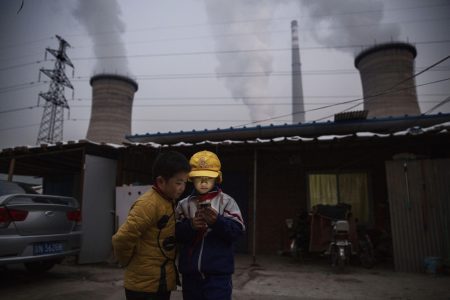October 21, 2016 – Emissions from Asian coal-fired power plants remain one of the more significant climate change challenges faced by the world community. Although China is beginning to reduce coal consumption it remains a key builder of thermal-coal plants with 250 Gigawatts still under construction. India is even more significant in its investment in coal with 650 Gigawatts of capacity under construction. At the same time both countries are investing in renewable energy projects but to meet their domestic energy demands cannot abandon coal.
In a recent paper produced by Energy Transition Advisors (ETA), entitled Thermal Coal in Asia – Stopping the Juggernaut, the authors point out the China is “perilously close to surpassing” its carbon emission targets (2019 estimate) and India is expected to do so in time (2039 estimate). For both countries the only solution other than to shut these thermal-coal plants down is carbon capture and sequestration (CCS). The paper points to thermal coal in Asia as being “the key to global emissions and hence the climate.”
In a recent World Energy Investment publication it conjectures that China’s rush to power up has produced an “overinvestment in coal-fired generation.” That’s because China is also making enormous investments in renewable energy (wind, hydro, solar and geothermal). CCS may be China’s best way to get themselves out of the contradiction that has resulted from too many projects running counter to different objectives for the country.
Only through an emissions cap will both Asian giants begin to address coal. China is implementing a national cap-and-trade carbon market. Until recently the country had experimented with a carbon market for a few specific cities and one region of the country. The national program should produce market conditions to limit future investments in thermal coal. In India there appears to be no formal policy to move to a cap-and-trade system. Currently the country has yet to put a price on carbon pollution whether through a tax or a cap-based system. Both countries are signatories to the COP 21 Paris climate change agreement. The question is, particularly for India, when will the country begin to tackle carbon emissions while trying to bring a modern electrical power grid that serves all regions of the country. Both countries recently announced a moratorium or a limitation on the number of new coal power permits.
Both countries have set 2030 as the point when they will begin a transition to a low carbon future with near complete decarbonization by 2050. If CCS can be deployed at reasonable cost either through dedicated add-ons to existing thermal-coal plants, or as hubs to grab carbon from multiple sites, the rate of decarbonization can be increased. The question for the leadership in both countries is “do they have the political will?”









